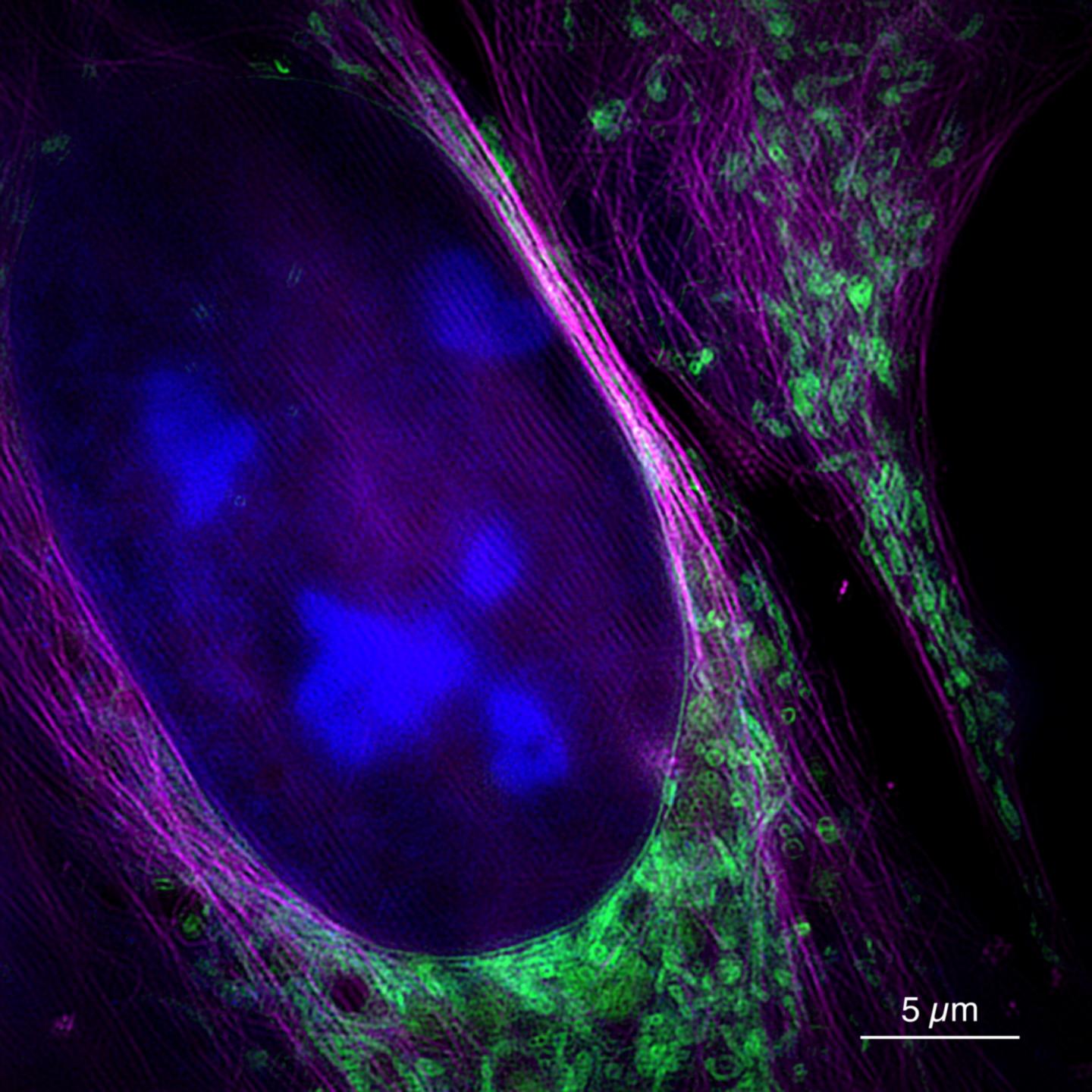
When you want to look at something small up close, you use a microscope. And when you want to look at something really really small, you use a super-resolution microscope. These tools can look in resolutions of a millionth of a millimeter, but they work slowly due to the volume of image data that they need to record. Now, researchers have developed a way to speed up the process by creating a method which can record data at this microscopic scale in real-time.
As well as saving scientists time, the big advantage of a faster microscope it that it can be used to observe the movements of small objects like cell particles. “This is what makes this type of microscopy really useful for applications in biology or medicine,” Professor Dr. Thomas Huser, head of the Biomolecular Physics Working Group at Bielefeld University and one of the authors of the paper, explained in a statement. “The problem so far is that microscopes offering a sufficiently high resolution cannot display information at the corresponding speed.”
The method works by irradiating objects with laser light, so the molecules in the sample are excited and glow at different wavelengths. The microscope picks up this re-emitted light, so it provides a higher resolution image than other methods as well as a faster result. “We have been able to produce about 60 frames per second — a higher frame rate than cinema films,” Andreas Markwirth, lead author of the study, said in the same statement. “The time between measurement and image is less than 250 milliseconds, so the technology allows real-time recording.”
This real-time recording method can be used to examine biological elements, such as the movements of mitochondria (part of a cell). It can also be used to observe the way that viral particles move through a cell. “Our method is both high-resolution and fast, which enables biologists to explore such structures,” Huser said. The researchers are planning to use the new technology for these types of studies within the next year.
The research is published in the journal Nature Communications.



